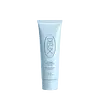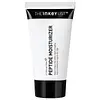What's inside
What's inside
 Key Ingredients
Key Ingredients

 Benefits
Benefits

 Concerns
Concerns

 Ingredients Side-by-side
Ingredients Side-by-side

Water
Skin ConditioningGlycerin
HumectantDimethicone
EmollientDimethicone Crosspolymer
Emulsion StabilisingC12-15 Alkyl Benzoate
AntimicrobialHydroxyethyl Acrylate/Sodium Acryloyldimethyl Taurate Copolymer
Emulsion StabilisingImperata Cylindrica Root Extract
Skin ConditioningCaprylic/Capric Triglyceride
MaskingMethylpropanediol
SolventSqualane
EmollientCetyl Alcohol
EmollientMeadowfoam Estolide
Skin ConditioningDipalmitoyl Hydroxyproline
Skin ConditioningTribehenin
EmollientSodium PCA
HumectantUrea
BufferingCarbomer
Emulsion StabilisingPhenoxyethanol
PreservativeCaprylyl Glycol
EmollientCollagen Amino Acids
MoisturisingPropanediol
SolventHaematococcus Pluvialis Extract
AntioxidantTrehalose
HumectantLinoleic Acid
CleansingPhytosterols
Skin ConditioningPhospholipids
Skin ConditioningPalmitic Acid
EmollientPolysorbate 60
EmulsifyingSorbitan Isostearate
EmulsifyingCeramide Ng
Skin ConditioningHexylene Glycol
EmulsifyingPEG-10 Phytosterol
EmulsifyingPolyquaternium-51
Skin ConditioningTriacetin
AntimicrobialSodium Hyaluronate
HumectantAcrylates/C10-30 Alkyl Acrylate Crosspolymer
Emulsion StabilisingPalmitoyl Hexapeptide-12
Skin ConditioningSodium Hydroxide
BufferingLactic Acid
BufferingWater, Glycerin, Dimethicone, Dimethicone Crosspolymer, C12-15 Alkyl Benzoate, Hydroxyethyl Acrylate/Sodium Acryloyldimethyl Taurate Copolymer, Imperata Cylindrica Root Extract, Caprylic/Capric Triglyceride, Methylpropanediol, Squalane, Cetyl Alcohol, Meadowfoam Estolide, Dipalmitoyl Hydroxyproline, Tribehenin, Sodium PCA, Urea, Carbomer, Phenoxyethanol, Caprylyl Glycol, Collagen Amino Acids, Propanediol, Haematococcus Pluvialis Extract, Trehalose, Linoleic Acid, Phytosterols, Phospholipids, Palmitic Acid, Polysorbate 60, Sorbitan Isostearate, Ceramide Ng, Hexylene Glycol, PEG-10 Phytosterol, Polyquaternium-51, Triacetin, Sodium Hyaluronate, Acrylates/C10-30 Alkyl Acrylate Crosspolymer, Palmitoyl Hexapeptide-12, Sodium Hydroxide, Lactic Acid
Water
Skin ConditioningCaprylic/Capric Triglyceride
MaskingGlycerin
HumectantC12-15 Alkyl Benzoate
AntimicrobialCetearyl Alcohol
EmollientGlyceryl Stearate Se
EmulsifyingBetaine
HumectantButylene Glycol
HumectantPhenoxyethanol
PreservativeBenzyl Alcohol
PerfumingCarbomer
Emulsion StabilisingButyrospermum Parkii Butter
Skin ConditioningSodium Stearoyl Glutamate
CleansingSodium Hydroxide
BufferingEthylhexylglycerin
Skin ConditioningSodium Gluconate
Skin ConditioningTocopheryl Acetate
AntioxidantDehydroacetic Acid
PreservativeHydrogenated Lecithin
EmulsifyingPhenethyl Alcohol
MaskingAcetyl Hexapeptide-37
Skin ConditioningMaltodextrin
AbsorbentPentapeptide-48
Skin ConditioningWater, Caprylic/Capric Triglyceride, Glycerin, C12-15 Alkyl Benzoate, Cetearyl Alcohol, Glyceryl Stearate Se, Betaine, Butylene Glycol, Phenoxyethanol, Benzyl Alcohol, Carbomer, Butyrospermum Parkii Butter, Sodium Stearoyl Glutamate, Sodium Hydroxide, Ethylhexylglycerin, Sodium Gluconate, Tocopheryl Acetate, Dehydroacetic Acid, Hydrogenated Lecithin, Phenethyl Alcohol, Acetyl Hexapeptide-37, Maltodextrin, Pentapeptide-48
 Reviews
Reviews

Ingredients Explained
These ingredients are found in both products.
Ingredients higher up in an ingredient list are typically present in a larger amount.
C12-15 Alkyl Benzoate is made up of Benzoic Acid and long chain alcohols. It has a low molecular weight.
C12-15 Alkyl Benzoate is an emollient and texture enhancer. Due to its solubility, it is often used in sunscreens to help evenly distribute active ingredients.
As an emollient, C12-15 Alkyl Benzoate helps soften and hydrate your skin. Emollients create a film on your skin that traps moisture within.
This ingredient has been reported to cause eye irritation.
Learn more about C12-15 Alkyl BenzoateThis ingredient is an emollient, solvent, and texture enhancer. It is considered a skin-softener by helping the skin prevent moisture loss.
It helps thicken a product's formula and makes it easier to spread by dissolving clumping compounds.
Caprylic Triglyceride is made by combining glycerin with coconut oil, forming a clear liquid.
While there is an assumption Caprylic Triglyceride can clog pores due to it being derived from coconut oil, there is no research supporting this.
Learn more about Caprylic/Capric TriglycerideCarbomer is a polymer of acrylic acid. Its main role is to create a gel consistency.
A high amount of carbomer can cause pilling or balling up of products. Don't worry, most products contain 1% or less of carbomer.
Glycerin is already naturally found in your skin. It helps moisturize and protect your skin.
A study from 2016 found glycerin to be more effective as a humectant than AHAs and hyaluronic acid.
As a humectant, it helps the skin stay hydrated by pulling moisture to your skin. The low molecular weight of glycerin allows it to pull moisture into the deeper layers of your skin.
Hydrated skin improves your skin barrier; Your skin barrier helps protect against irritants and bacteria.
Glycerin has also been found to have antimicrobial and antiviral properties. Due to these properties, glycerin is often used in wound and burn treatments.
In cosmetics, glycerin is usually derived from plants such as soybean or palm. However, it can also be sourced from animals, such as tallow or animal fat.
This ingredient is organic, colorless, odorless, and non-toxic.
Glycerin is the name for this ingredient in American English. British English uses Glycerol/Glycerine.
Learn more about GlycerinPhenoxyethanol is a preservative that has germicide, antimicrobial, and aromatic properties. Studies show that phenoxyethanol can prevent microbial growth. By itself, it has a scent that is similar to that of a rose.
It's often used in formulations along with Caprylyl Glycol to preserve the shelf life of products.
Sodium Hydroxide is also known as lye or caustic soda. It is used to adjust the pH of products; many ingredients require a specific pH to be effective.
In small amounts, sodium hydroxide is considered safe to use. However, large amounts may cause chemical burns due to its high alkaline.
Your skin has a natural pH and acid mantle. This acid mantle helps prevent harmful bacteria from breaking through. The acid mantle also helps keep your skin hydrated.
"Alkaline" refers to a high pH level. A low pH level would be considered acidic.
Learn more about Sodium HydroxideWater. It's the most common cosmetic ingredient of all. You'll usually see it at the top of ingredient lists, meaning that it makes up the largest part of the product.
So why is it so popular? Water most often acts as a solvent - this means that it helps dissolve other ingredients into the formulation.
You'll also recognize water as that liquid we all need to stay alive. If you see this, drink a glass of water. Stay hydrated!
Learn more about Water